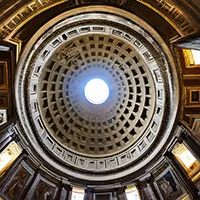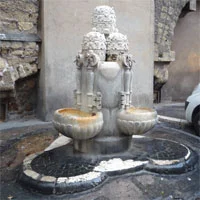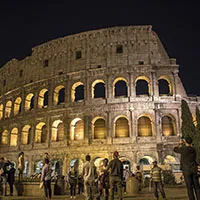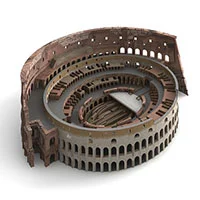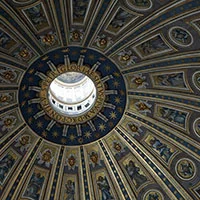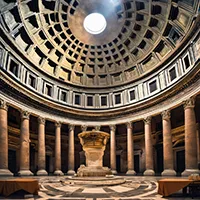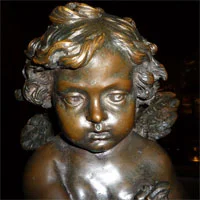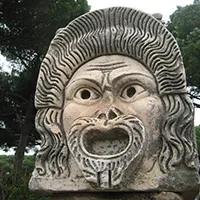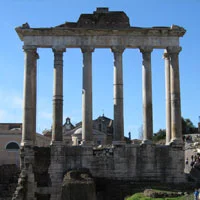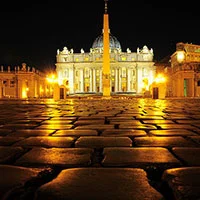The Pyramid of Cestius is an ancient pyramid in Rome, Italy. It was built around 18-12 BC as a tomb for Gaius Cestius, a magistrate and member of one of the four great religious corporations of Rome. The pyramid is located in the southern part of the city, near the Porta San Paolo and the Protestant Cemetery.
The pyramid stands about 36 meters (118 feet) high, and is made of white Carrara marble blocks on a concrete core. The base of the pyramid measures 29.5 meters (97 feet) on each side. The structure is similar in shape to the pyramids of Egypt, with a square base and four triangular faces that meet at a point at the top.
The interior of the pyramid consists of a single burial chamber, which was decorated with frescoes in the past. The chamber was looted long ago, but the pyramid was restored in the 17th century.
The Pyramid of Cestius is an unusual structure in Rome, as there are no other pyramids in the city. It is one of the best-preserved ancient pyramids in the world, and has become a popular tourist attraction in Rome. It is also considered to be a symbol of the fusion of different cultures in Rome, as it combines the Egyptian form of the pyramid with the Roman tradition of building tombs.
The area around the Pyramid of Cestius in Rome is known as the Testaccio neighborhood, which is a historic and diverse area located in the southern part of the city. This neighborhood is known for its rich history, culinary scene, and vibrant nightlife.
Testaccio is home to a number of cultural and entertainment venues, including the MACRO Testaccio Museum, which features contemporary art exhibitions and events, and the Città dell'Altra Economia, a cultural center housed in a former slaughterhouse that now hosts concerts, film screenings, and markets.
The neighborhood is also known for its traditional food markets, such as the Mercato di Testaccio, which offers a wide range of fresh produce, meat, fish, and artisanal products. The area is also home to many restaurants, pizzerias, and gelaterias, offering traditional Roman and Italian cuisine.
In addition, Testaccio is a popular nightlife destination, with a variety of bars and clubs that cater to all tastes. The neighborhood is known for its lively street parties and festivals, such as the Estate Romana, a summer festival that includes cultural events and concerts.
Overall, the area around the Pyramid of Cestius in Rome is a vibrant and culturally rich neighborhood, offering a unique blend of history, culinary delights, and contemporary entertainment.
Hope you did enjoy the article, scroll down to find links to many other subjects and thank you for your support :-)
